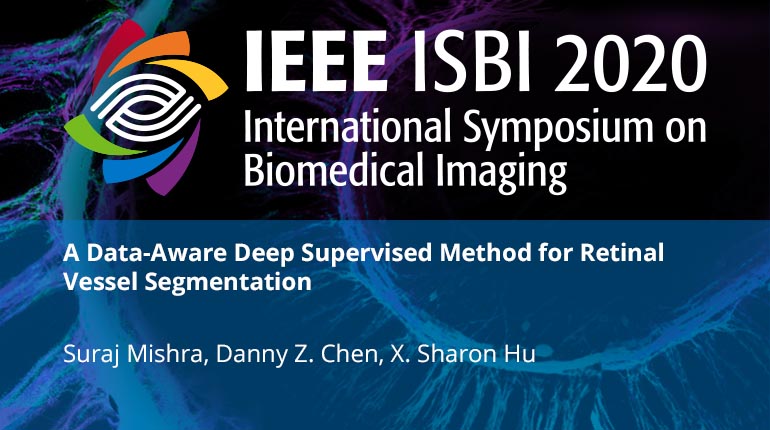Collection:

Accurate vessel segmentation in retinal images is vital for retinopathy diagnosis and analysis. However, existence of very thin vessels in low image contrast along with pathological conditions (e.g., capillary dilation or microaneurysms) render the segmentation task difficult. In this work, we present a novel approach for retinal vessel segmentation focusing on improving thin vessel segmentation. We develop a deep convolutional neural network (CNN), which exploits the specific characteristics of the input retinal data to use deep supervision, for improved segmentation accuracy. In particular, we use the average input retinal vessel width and match it with the layer-wise effective receptive fields (LERF) of the CNN to determine the location of the auxiliary supervision. This helps the network to pay more attention to thin vessels, that otherwise the network would 'ignore' during training. We verify our method on three public retinal vessel segmentation datasets (DRIVE, CHASE_DB1, and STARE), achieving better sensitivity (10.18% average increase) than state-of-the-art methods while maintaining comparable specificity, accuracy, and AUC.
- IEEE MemberUS $11.00
- Society MemberUS $0.00
- IEEE Student MemberUS $11.00
- Non-IEEE MemberUS $15.00
Videos in this product
A Data-Aware Deep Supervised Method for Retinal Vessel Segmentation
Accurate vessel segmentation in retinal images is vital for retinopathy diagnosis and analysis. However, existence of very thin vessels in low image contrast along with pathological conditions (e.g., capillary dilation or microaneurysms) render the segmentation task difficult. In this work, we present a novel approach for retinal vessel segmentation focusing on improving thin vessel segmentation. We develop a deep convolutional neural network (CNN), which exploits the specific characteristics of the input retinal data to use deep supervision, for improved segmentation accuracy. In particular, we use the average input retinal vessel width and match it with the layer-wise effective receptive fields (LERF) of the CNN to determine the location of the auxiliary supervision. This helps the network to pay more attention to thin vessels, that otherwise the network would 'ignore' during training. We verify our method on three public retinal vessel segmentation datasets (DRIVE, CHASE_DB1, and STARE), achieving better sensitivity (10.18% average increase) than state-of-the-art methods while maintaining comparable specificity, accuracy, and AUC.
 Cart
Cart Create Account
Create Account Sign In
Sign In
